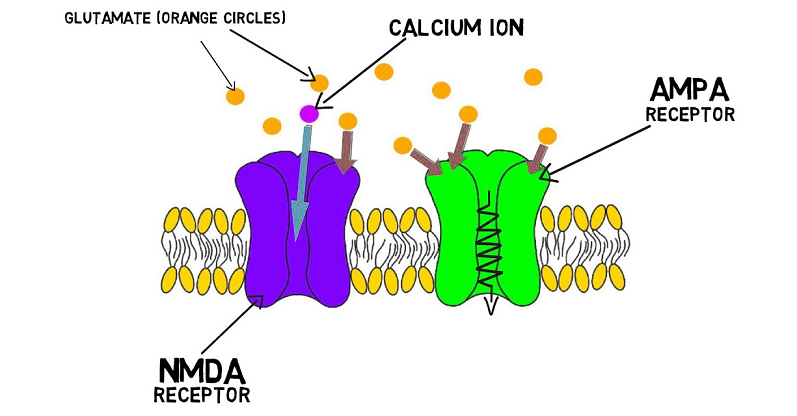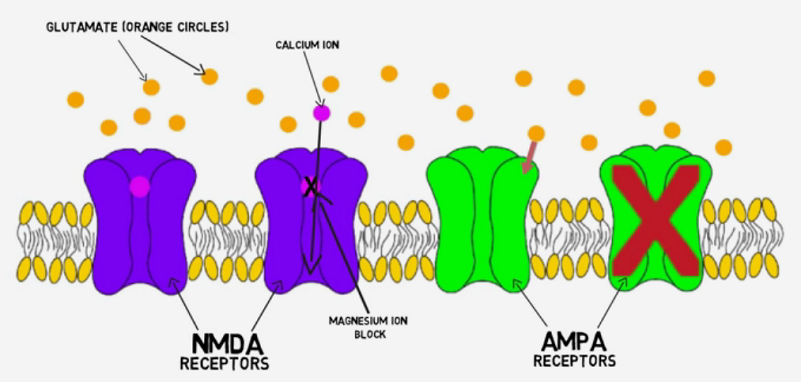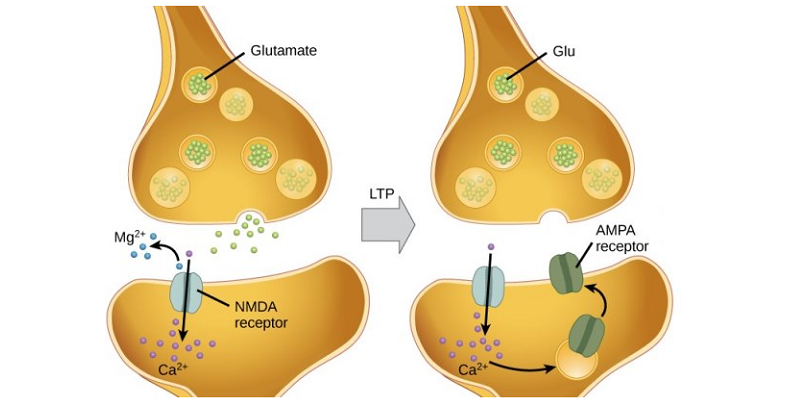
Long-Term Potentiation (LTP) and Long-Term Depression (LTD) are two processes that are as essential to your brain’s performance as inhaling and exhaling are to your lungs. But why should you care about these complex-sounding terms? Imagine you’re at the gym, focusing on building muscle strength and flexibility. Your muscles need the right balance of exercise and rest to grow stronger and more efficient. In a similar fashion, the “muscles” of your neurons — namely, the synapses — require their own kinds of workouts and rests. LTP and LTD serve as the strength training and cool-down exercises for your neurons, respectively. Understanding these processes could be key to improving memory, enhancing learning abilities, and even offering therapeutic solutions to various neurological conditions.
Contents
Introduction to Neurons and Synapses
Before we jump into the nitty-gritty, it’s important to understand some basics. Neurons are the building blocks of the brain, and synapses are the tiny gaps where neurons communicate with each other. Think of synapses as the bustling intersections in a vast city of neurons, each transmitting important messages that collectively form your thoughts, emotions, and actions.
Importance of Synaptic Strength in Cognitive Health
You might wonder why synaptic strength is a big deal. To continue with our city analogy, imagine if the intersections were inefficient; traffic would bottleneck, and the entire system would become sluggish. Similarly, optimal synaptic strength is crucial for quick and efficient neuronal communication, affecting everything from learning and memory to decision-making and emotional regulation.
Introduction to Long-Term Potentiation (LTP) and Long-Term Depression (LTD)
Now, let’s introduce the stars of today’s post: Long-Term Potentiation and Long-Term Depression. In simple terms, LTP strengthens the connections between neurons, making it easier for them to communicate. On the flip side, LTD weakens these connections. These two processes are in a constant dance, a push and pull, that regulates your cognitive functions.
In this blog post, we will delve into the complex science behind LTP and LTD, the mechanisms through which they operate, and their role in overall cognitive health. We’ll also explore how they work in concert—much like the yin and yang—to maintain a balanced, well-functioning brain.
Basic Neuronal and Synapses Definitions and Background
Understanding the terminology and basic mechanisms involved will help you appreciate the intricate dance between Long-Term Potentiation (LTP) and Long-Term Depression (LTD).
What is a Synapse?
To navigate the world of brain health, it’s important to understand what a synapse is, to begin with.
Definition
A synapse is the small gap or junction between two neurons where communication occurs. It serves as the meeting point where one neuron (the presynaptic neuron) sends signals to another neuron (the postsynaptic neuron).
Role in Neuronal Communication
The synapse is like the courier system of the brain. Neurotransmitters are chemical messages that travel across this gap, allowing neurons to communicate with each other. This transmission of information is essential for virtually every action and thought you experience, from moving your fingers to solving a complex puzzle [1].
Neuronal Plasticity
With a better understanding of synapses, let’s discuss a term that’s equally crucial: neuronal plasticity.
Definition
Neuronal plasticity refers to the brain’s ability to reorganize and form new neural connections throughout life. This adaptability is one of the most remarkable aspects of the brain.
Importance for Learning and Memory
Plasticity is like the brain’s superpower for learning and adaptation. It allows us to acquire new skills, form memories, and adapt to new environments or situations. Without plasticity, our ability to learn would be severely limited, if not impossible.
Long-Term Potentiation (LTP)
Now that we’ve laid down the basics, let’s dive into one of the key players in synaptic strength: Long-Term Potentiation or LTP.
Definition
LTP is a process where repeated stimulation of one neuron by another leads to a strengthening of the synapse, making future communications between these neurons more efficient.
Biological Mechanisms
At a cellular level, LTP occurs mainly through the activation of NMDA receptors, which leads to an influx of calcium ions. This triggers a cascade of biochemical events that result in increased sensitivity and responsiveness of the synapse.
Functional Significance
LTP is often described as the cellular basis for learning and memory. When you learn something new, certain synapses are strengthened via LTP, making it easier for those neurons to communicate and thus, reinforcing the learned behavior or information [2].
Long-Term Depression (LTD)
Just as there’s a time for synaptic strength to grow, there’s also a time for it to retract. This brings us to Long-Term Depression, or LTD.
Definition
LTD is essentially the opposite of LTP. It’s a process where the strength of a synapse is weakened, usually as a result of decreased activity or less frequent stimulation between neurons.
Biological Mechanisms
LTD occurs through mechanisms like AMPA receptor internalization, where the receptor is removed from the synapse, leading to a decrease in synaptic strength.
Functional Significance
You might wonder why we’d ever want to weaken synaptic connections. LTD is crucial for cognitive functions like forgetting irrelevant information and adapting to new situations. It also allows the brain to remain flexible, balancing out the strengthening effects of LTP.

Long-Term Potentiation: The “Strength Training” for Neurons
Think of LTP as the strength training regimen for your neurons. Just as lifting weights regularly makes your muscles stronger and more efficient, LTP strengthens the synapses between neurons, making communication more effective.
Mechanisms of LTP
Understanding the mechanisms that drive LTP can seem complex, but it’s essential for appreciating how our brains adapt and learn. Let’s break it down.
NMDA Receptor Activation
The first step in the LTP process usually involves the activation of NMDA receptors on the postsynaptic neuron. When both the presynaptic and postsynaptic neurons are activated simultaneously, the NMDA receptors open up, allowing calcium ions to enter the neuron [3].
Calcium Influx
The calcium ions act as a trigger, setting off a series of biochemical reactions within the neuron. This is akin to lighting the fuse of a fireworks display; once ignited, a cascade of events unfolds.
Changes in Synaptic Strength
As a result of these biochemical reactions, more AMPA receptors are inserted into the postsynaptic membrane, or the existing ones become more sensitive. This effectively strengthens the synapse, making it easier for that particular neural pathway to transmit signals.
Role in Learning and Memory
Now that we know how LTP works at a cellular level, let’s explore its functional significance in our daily lives.
Experimental Evidence
Research has shown a strong correlation between LTP and learning. In animal studies, inducing LTP improves performance in learning tasks, while blocking LTP impairs learning. These findings provide strong experimental evidence for the role of LTP in learning and memory formation.
Real-World Applications
In human terms, this means that activities like studying, practicing an instrument, or even navigating a new route can lead to LTP in relevant neural circuits. These strengthened connections make it easier to recall information or perform a skill, essentially forming the basis of learning and memory.
Limitations and Downsides of LTP
While LTP may sound like the ultimate brain-boosting mechanism, it’s essential to acknowledge that it’s not without its downsides.
Over-Excitation and Neurotoxicity
Too much of a good thing can be harmful, and LTP is no exception. Over-activation of synaptic pathways can lead to excessive calcium influx, which may cause neuronal damage or even cell death through a process called excitotoxicity.
Link to Conditions like Epilepsy
Overactive LTP mechanisms have also been implicated in conditions like epilepsy, where excessive synchronization of neuronal activity can lead to seizures. Understanding the limitations of LTP can thus be crucial in the medical field for treating various disorders.

Long-Term Depression: The Necessary Counterbalance
Think of LTD as the cool-down routine or rest days in your strength training regimen. Just as your muscles need rest to recover and prevent overtraining, your neurons require LTD to ensure that they don’t become overactive, thereby maintaining a balanced and efficient network.
Mechanisms of LTD
Understanding how LTD works at a cellular level is critical for a comprehensive grasp of synaptic plasticity. So let’s take a closer look.
AMPA Receptor Internalization
One of the key mechanisms of LTD involves the removal or internalization of AMPA receptors from the postsynaptic membrane. This action reduces the synapse’s sensitivity, effectively weakening the connection between the neurons [4].
Reduced Calcium Influx
Unlike in LTP, where calcium plays an activating role, lower levels of calcium influx during LTD help trigger the internalization of AMPA receptors. This shift in calcium dynamics plays a central role in the weakening of the synapse.
Biochemical Changes
Just as in LTP, LTD also involves a series of biochemical events. However, these lead to a reduction in synaptic strength rather than an increase, helping to balance out the effects of LTP.
Role in Cognitive Functions
LTD isn’t just the brain’s way of undoing or counterbalancing LTP. It has its unique roles that are crucial for cognitive functioning.
Forgetting and Memory Consolidation
While it may seem counterintuitive, forgetting is an essential cognitive function. LTD helps in eliminating less important or less frequently used connections, making room for new information and aiding in memory consolidation.
Behavioral Adaptation
LTD plays a key role in our ability to adapt our behaviors. By weakening certain neural pathways, it allows us to unlearn outdated or non-adaptive behaviors, making it easier to adjust to new environments or circumstances.
Potential Drawbacks and Limitations
Even though LTD is necessary for cognitive balance, it’s not without its drawbacks, much like LTP.
Cognitive Decline and Disorders
Excessive LTD has been implicated in various cognitive disorders and conditions like Alzheimer’s disease, where it may contribute to the weakening of important synaptic connections.
Role in Depression and Anxiety
Some research suggests that LTD may play a role in mood disorders like depression and anxiety, although the relationship is complex and not fully understood.

The Interplay Between LTP and LTD: A Balanced Act
Having dissected the individual roles of Long-Term Potentiation (LTP) and Long-Term Depression (LTD), it’s tempting to see them as antagonistic processes — rivals vying for control over your neurons. However, the reality is far more nuanced. LTP and LTD are more like dance partners, each contributing their unique moves to create a beautifully coordinated performance that is your cognitive function. Understanding their interplay is crucial for a holistic grasp of brain health.
Bidirectional Synaptic Plasticity
Bidirectional synaptic plasticity is a term that refers to the ability of synapses to both strengthen and weaken in response to various factors. Before delving into the details, let’s understand the concept itself [5].
What Is It?
Bidirectional Synaptic Plasticity refers to the phenomenon where a synapse can undergo both LTP and LTD, depending on the conditions and the type of stimulation it receives.
Importance for Neural Homeostasis
This bidirectional capability is crucial for maintaining a balanced and stable neural environment, often referred to as “homeostasis.” Without the option to weaken or strengthen synapses, our neural networks would either become too rigid or too chaotic.
Complementary Roles in Learning and Memory
While LTP and LTD have their independent functions, when it comes to learning and memory, they act more like two sides of the same coin.
Consolidation and Refinement
LTP is crucial for laying down new memories and learning new skills. LTD, on the other hand, helps to refine these memories and skills by pruning away the less important or incorrect information. This complementary action allows for more effective learning and memory retention.
Cognitive Flexibility
The interplay between LTP and LTD also contributes to cognitive flexibility. By strengthening new pathways while weakening less relevant or outdated ones, the brain can adapt more easily to new information or changing environments.
Co-Regulation and Balance
LTP and LTD are not just co-actors; they also co-regulate each other to maintain balance within the neural network.
Negative Feedback Mechanisms
In biological systems, negative feedback mechanisms often come into play to keep processes in check. In the context of LTP and LTD, these mechanisms ensure that the occurrence of one process can inhibit or trigger the other to prevent any imbalances.
Implications for Cognitive Health
A balanced interplay between LTP and LTD is essential for cognitive health. Disruption in this balance has been implicated in various neurological conditions and learning disabilities.
References
[1] Long-term potentiation and long-term depression: a clinical perspective
[2] Long-Term Potentiation and Long-Term Depression
[3] Hippocampal long-term depression and long-term potentiation encode different aspects of novelty acquisition
[4] Short-term depression and long-term plasticity together tune sensitive range of synaptic plasticity
[5] Multiple Forms of Long-Term Potentiation and Long-Term Depression Converge on a Single Interneuron

